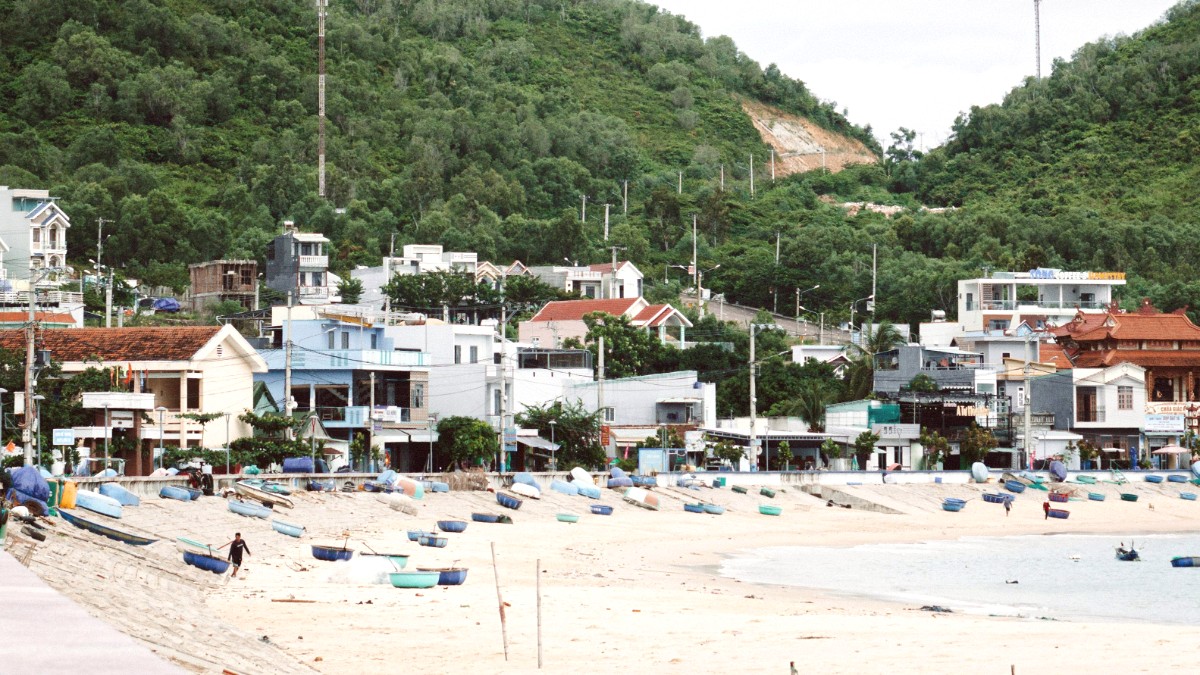
Vietnam
The city experiences a tropical monsoon climate, characterized by two distinct seasons.
Dry Season (March to September): Warm to hot temperatures (25°C to 35°C / 77°F to 95°F), lower humidity, minimal rainfall. Clear skies, abundant sunshine. July and August can be very warm.
Rainy Season (October to February): Cooler temperatures (20°C to 28°C / 68°F to 82°F), higher humidity, increased rainfall. Peak rain October to December (tropical showers). January and February see gradual rainfall decrease.
Typhoons/Tropical Storms: Occur mainly during the rainy season (October to December). These bring strong winds, heavy rainfall, and potential flooding, disrupting travel plans. Monitor local weather forecasts.
Extreme Temperatures: Rare, but the dry season (July and August) brings very hot and humid conditions. Take precautions against heatstroke and sunburn during these months.
Ideal Time: March - September
Calm seas and clear, warm water suitable for swimming, snorkeling, and boat trips.
October - February due to increased rainfall and potential storms.
Ideal Time: March - April, September
Comfortable temperatures for exploring Cham towers, museums, and pagodas without intense heat.
Peak heat of July-August for extensive outdoor walking, and heavy rains of October-December.
Ideal Time: March - April, January - February
Cooler temperatures make physical activity more comfortable at places like Eo Gio and Ghềnh Ráng.
Intense heat of mid-dry season. Rainy season brings wet trails.
Visa Exemption: Citizens of many countries qualify for visa exemptions for specific durations (e.g., 15, 30, or 45 days). Check current official information from the Vietnamese Embassy or Immigration Department.
E-Visa: A convenient online option for citizens of 80 countries. Up to 90 days, single or multiple entry. Apply via official Vietnam Immigration Department website (evisa.xuatnhapcanh.gov.vn). Processing takes 3-5 working days. Print multiple copies.
Requires a pre-obtained approval letter from a licensed Vietnamese travel agency before flying. Receive visa stamp upon arrival at designated international airports (not Phu Cat). For those not qualifying for e-visa or needing longer stays.
Passport valid for at least six months beyond your departure date, with two blank pages.
Digital photo for e-visa. Two recent passport-sized photos (4x6 cm) for VOA.
Printed e-visa document or VOA approval letter. Airlines check this prior to boarding.
E-visa fee: US$25 (single), US$50 (multiple). VOA stamping fee: US$25 (single), US$50 (multiple), paid in cash (USD preferred) at airport.
Present passport, visa/approval, completed entry/exit form. Biometric data collection common.
Vietnam generally offers good value for money, but costs vary depending on individual preferences. Quy Nhon is typically more affordable than major tourist cities.
The official currency is the Vietnamese Dong (VND). Rough estimate: 1 USD ≈ 24,000 - 25,000 VND. Check current rates before and during travel.
Tipping is not a deeply rooted tradition in Vietnam but is becoming common and appreciated, especially in services catering to tourists.
These figures represent approximate price ranges and can fluctuate based on season and specific choices.
A well-stocked personal health kit and awareness of local safety practices contribute to a carefree journey.
No specific vaccinations are required for entry to Vietnam. Always check the latest official information before your trip.
Consult your doctor or a travel clinic well in advance for personalized advice based on your itinerary and activities.
Hepatitis A and B, Typhoid, Rabies (for animal contact), Japanese Encephalitis (for long rural stays) are often recommended.
Traveler's Diarrhea
Drink only bottled, filtered, or boiled water. Avoid ice unless purified. Consume thoroughly cooked food. Be cautious with raw vegetables or unpeeled fruits.
Mosquito-borne illnesses (Dengue Fever, Zika): Use insect repellent with DEET or picaridin, especially at dawn and dusk. Wear long sleeves/pants. Sleep under a mosquito net if rooms lack screens/AC.
Sunburn & Heatstroke: Use high SPF sunscreen, wear a wide-brimmed hat and UV-protective sunglasses. Stay hydrated with bottled water. Seek shade during peak sun hours (11 AM - 3 PM).
Quy Nhon has hospitals like Binh Dinh General Hospital. Quality varies; English-speaking staff may be limited. For serious conditions, evacuation to major cities may be recommended.
Widely available for common over-the-counter and some prescription medications.
Tap water is not safe for direct consumption. Always drink bottled water. Check seals. Carry a reusable bottle for refills from purified dispensers.
Quy Nhon is generally considered a safe city for tourists, with a lower crime rate than larger Vietnamese cities.
Highly recommended. Ensure coverage for medical emergencies, evacuation, trip cancellation, lost luggage, and planned activities. Review policy details.
Police: 113, Fire: 114, Ambulance: 115. Store on phone and as physical copy. Keep your country's embassy or consulate contact information handy (located in Hanoi or HCMC).
If lost or stolen, report to local police immediately for a police report. Contact your country's embassy or consulate without delay for guidance on obtaining an emergency travel document.